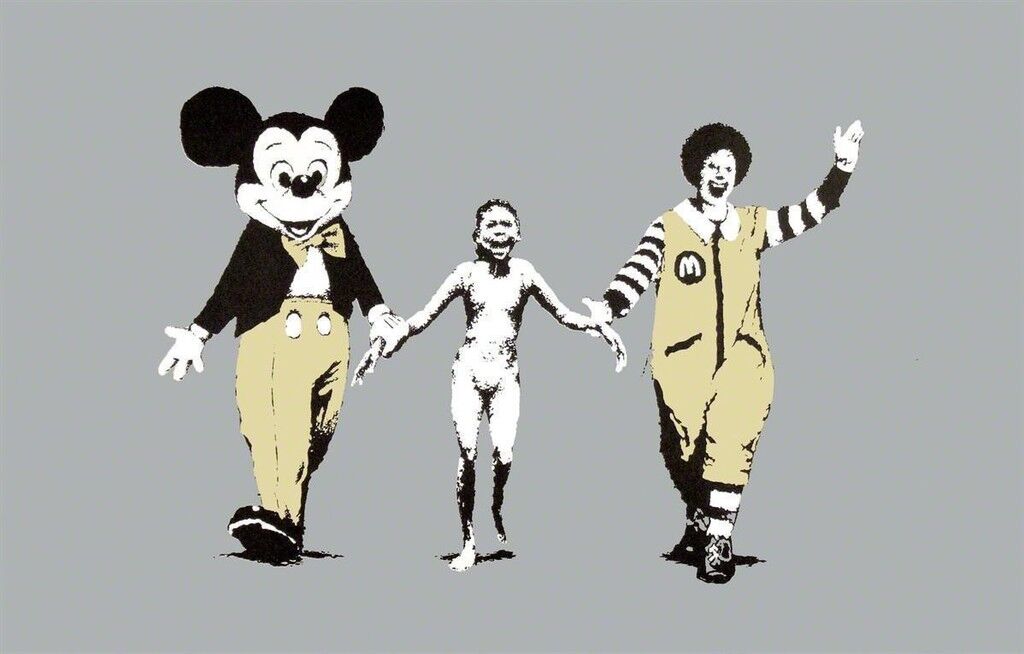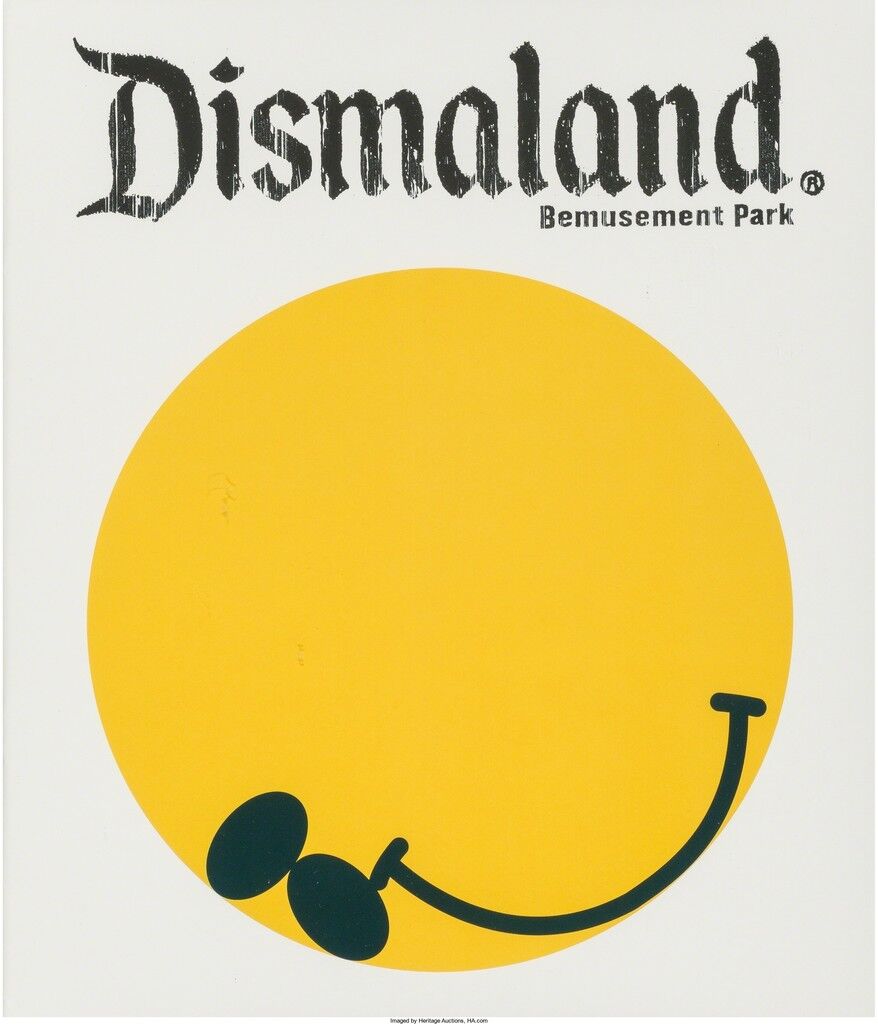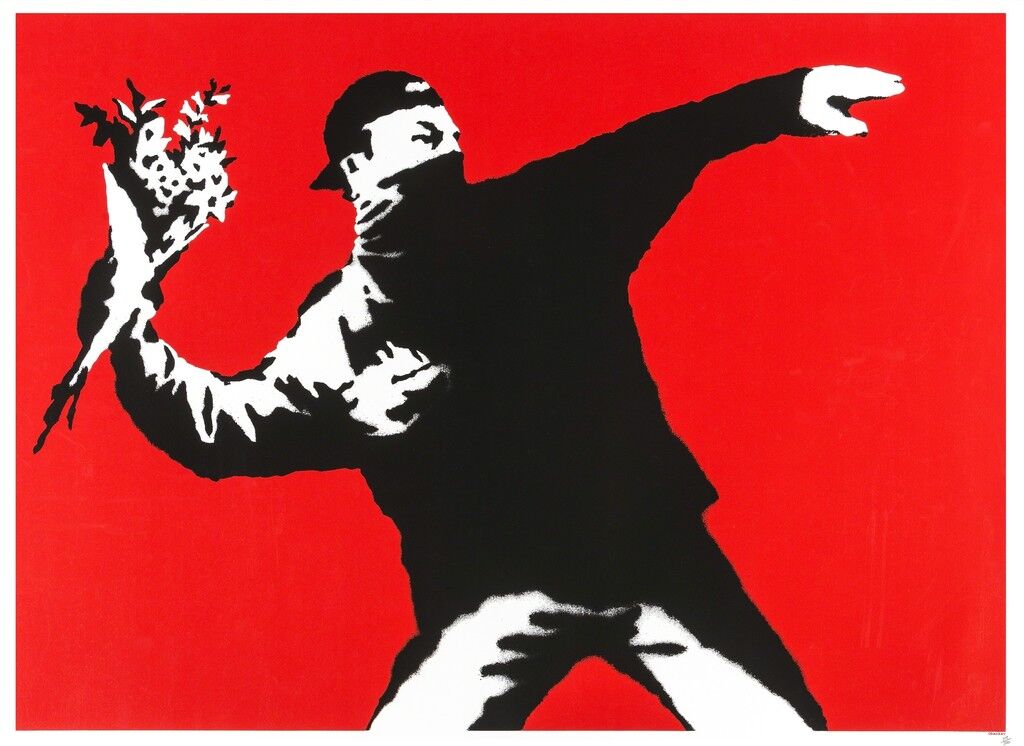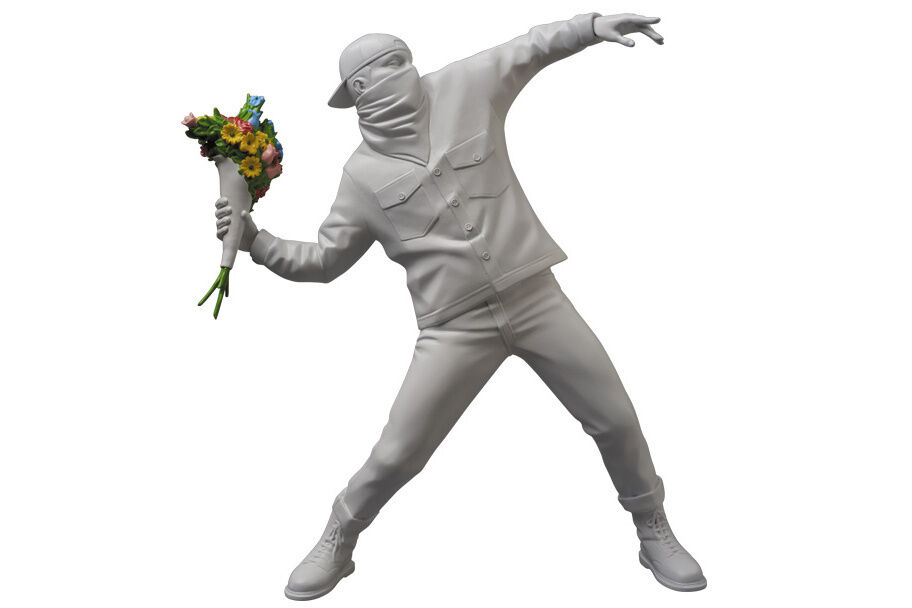The 6 Most Iconic Works by Banksy
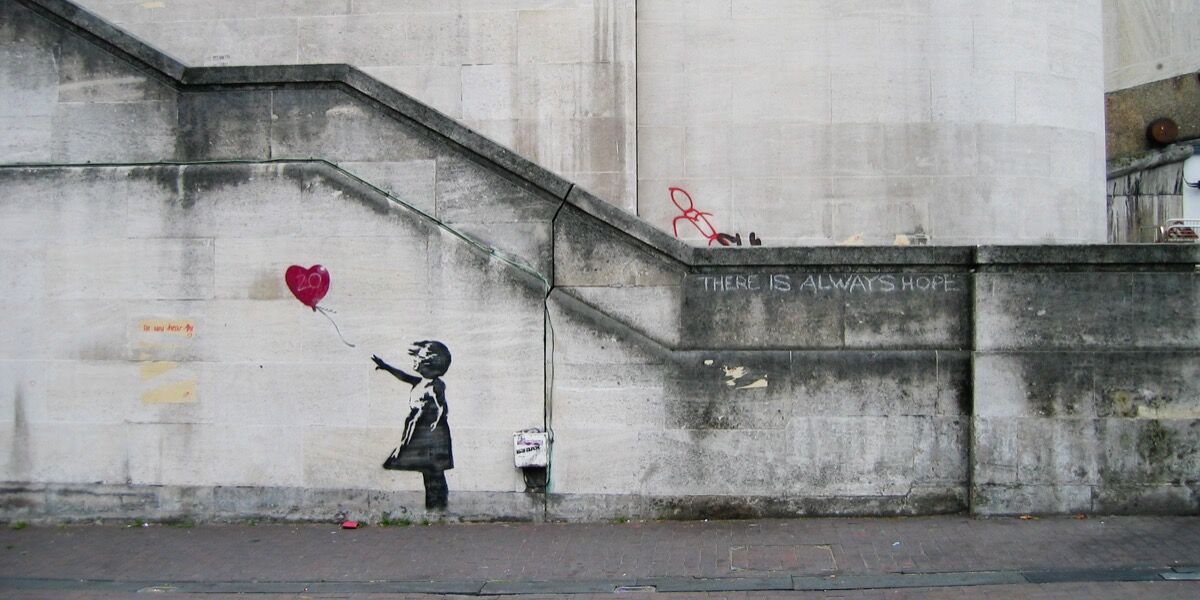
Banksy, Girl with Balloon. Photo by Dominic Robinson, via Flickr.
is less of an artist than a global phenomenon. He’s an anonymous graffiti superhero whose identity is endlessly debated by armchair conspiracy theorists; a political gadfly, weighing in on everything from the Israeli treatment of Palestinians to Brexit; and pure art-market gold, with recent work selling at auction for upwards of $1 million.
“He speaks for a generation,” said Maeve Doyle, artistic director of London’s Maddox Gallery. She’s fascinated by the way Banksy—once a sort of creative outlaw—has now been fully embraced by the straightlaced establishment. “As with everything in the art world, counterculture eventually becomes mainstream,” she said. But such populism isn’t always a bad thing. “If you go to Mexico, mechanics will know Banksy,” Doyle continued. “It’s wonderful.”
Banksy’s career has been marked by experimentation, risk, and a daring playfulness. His stencil-heavy motifs—of rats, cops, and kids with balloons—have simply become part of a shared cultural vocabulary, reproduced (and ripped off) with abandon. While it’s exceedingly difficult to narrow down a handful of works that define his aesthetic, we present below a selection of six projects that capture the artist’s hugely influential practice.
Napalm (2004)
Stowe Gallery
One of Banksy’s most harrowing motifs is an image of Mickey Mouse and Ronald McDonald happily skipping along while flanking a naked, crying young girl. The figure here is a familiar one—even if many viewers might not immediately place her as the subject of a 1972 photograph from the Vietnam War.
Napalm is Banksy at his most unforgiving and in-your-face; the co-optation of the icons of cultural fantasy and modern capitalism place this work firmly alongside the agitprop aesthetic of Adbusters magazine. Artists have long conscripted pop icons to make subversive or satirical points, and this mash-up between apparent innocence and utter horror is what gives Napalm its charge. It’s also what sets Banksy apart from an artist like KAWS
, who also incorporates kid-friendly figures like Elmo or Spongebob Squarepants in his work. An older generation of collectors, said Doyle, buy KAWS to “look cool to their kids. But it’s still Sesame Street—they don’t really get it. Whereas Banksy’s an interventionist. It’s political, it looks like political campaigning.”
The $60 pop-up sale in New York City (2013)
Despite the often-seriousness of his messaging, Banksy has a healthy sense of humor. (The devoutly anonymous artist’s webpage, for instance, includes a photo of someone—purportedly Banksy—being sketched by an outdoor portrait artist, while wearing a ski mask.)
A 2013 pop-up in New York City found Banksy offering $60 original stencil paintings near Central Park. As Gizmodo noted at the time, it wasn’t surprising that most people walked right on by, since Manhattan’s sidewalks are “littered with people selling Banksy ripoffs.” It’s helpful to consider this gonzo sale as a self-contained performance
artwork in its own right, and a commentary on value, celebrity, and site-specific context. Banksy reprised the concept, in a very different form, in Venice in 2019. There, he (or someone acting on his behalf) set up a street stall to peddle a series of oil paintings depicting the sort of cruise ship that is helping to slowly sink the city.
Dismaland (2015)
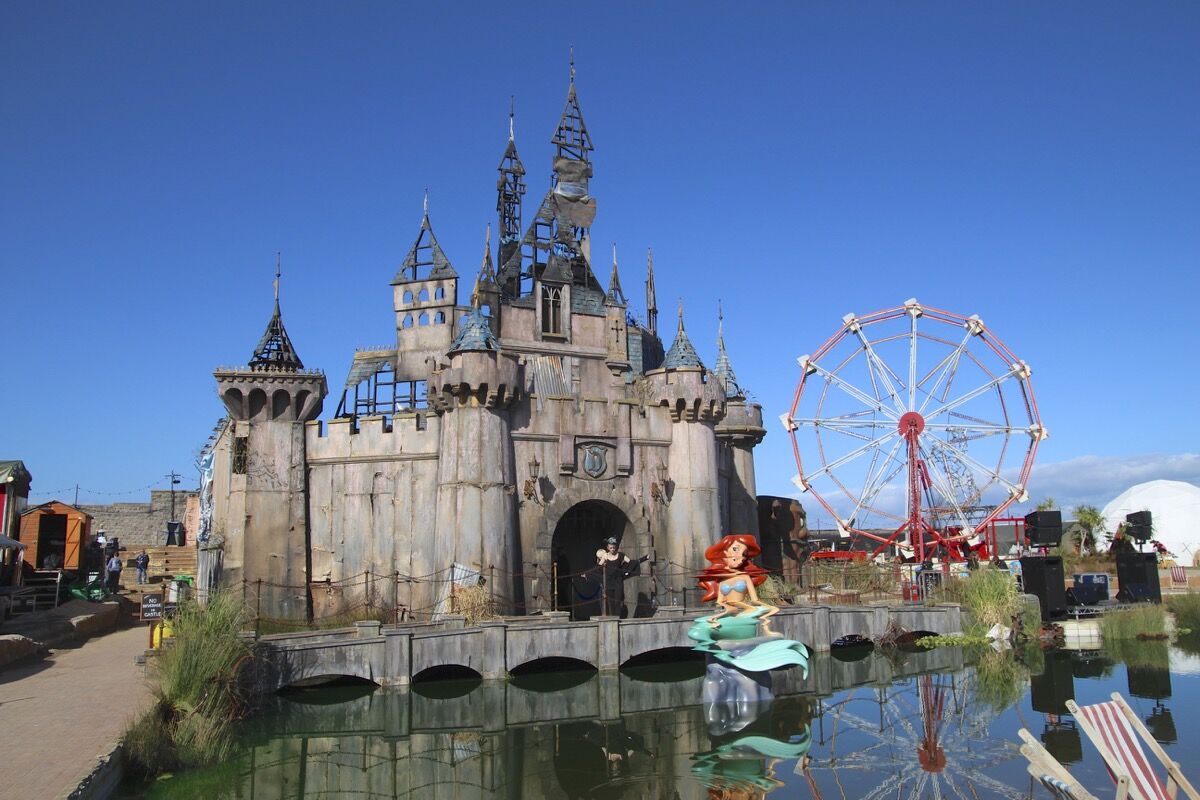
Banksy, Dismaland. Phtoto by Kathryn, via Flickr.
“This is a theme park like no other,” intoned the cheekily slick promo spot for Banksy’s most notorious installation. That’s something of an understatement. Launched in 2015, Dismaland was a faux-family-friendly destination on the British seaside. Modeled, of course, on Disneyland, Banksy’s iteration was purposefully bleak, aggressive rather than escapist. One catalyst was the work of painter Jeff Gillette
, who has long used ironic Disney imagery to highlight the bitter failings of the modern world.
banksyDismaland Bemusement Park
Heritage Auctions
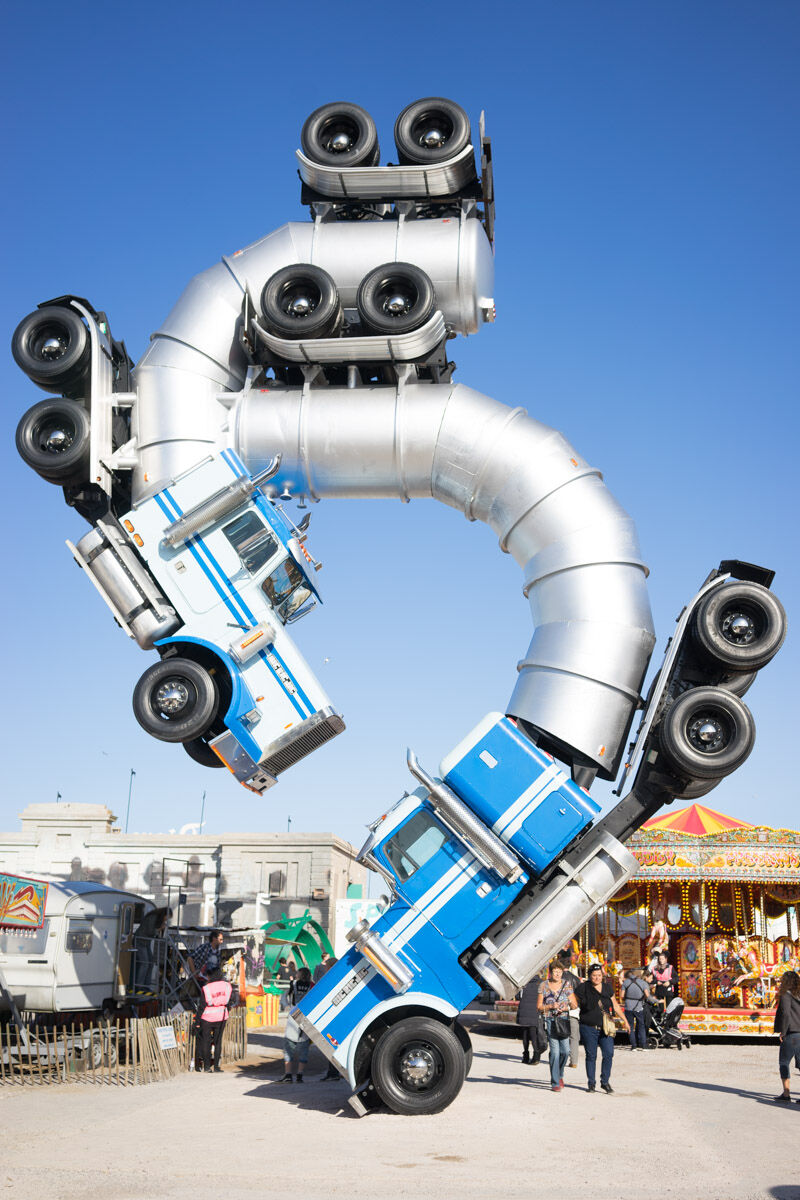
Banksy, Dismaland. Photo by Matt White, via Flickr.
The theme park also gave Banksy a chance to play curator, inviting friends and peers—including Damien Hirst
, and a former member of the notorious art collective The KLF—to install their own works on the site. A hulking riff on Cinderella’s Castle—nothing but a shallow façade, deceiving no one—dominated the site, and a remote-control boat game incorporated graphic imagery from the ongoing refugee crisis. “People brought their kids,” one helpful commentator reflected on Yelp. “Don’t take your kids, really.”
Love is in the Air (Flower Thrower) (2003)

Photo by jensimon7, via Fl
banksyLove is in the Air (Flower Thrower), 2003
Forum Auctions
banksyFlower Bomber (by Brandalism), ca. 2017
Banksy first executed this work in Jerusalem in 2003, painting it on the city’s West Bank barrier wall that separates Israel from its Occupied Territories. The image—which has been endlessly replicated since—depicts a protestor, sometimes referred to as “the masked thug,” caught in the act of hurling…a bouquet of colorful flowers, not a Molotov cocktail. (It could be considered a contemporary update on the classic 1967 photo Flower Power, in which protestors stuffed tiny flowers into soldiers’ gun barrels.) This is one of many artworks that Banksy has executed in favor of Palestinian rights, and his advocacy continues to stir controversy.
Basquiat being “stopped-and-frisked” outside the Barbican Centre (2017)
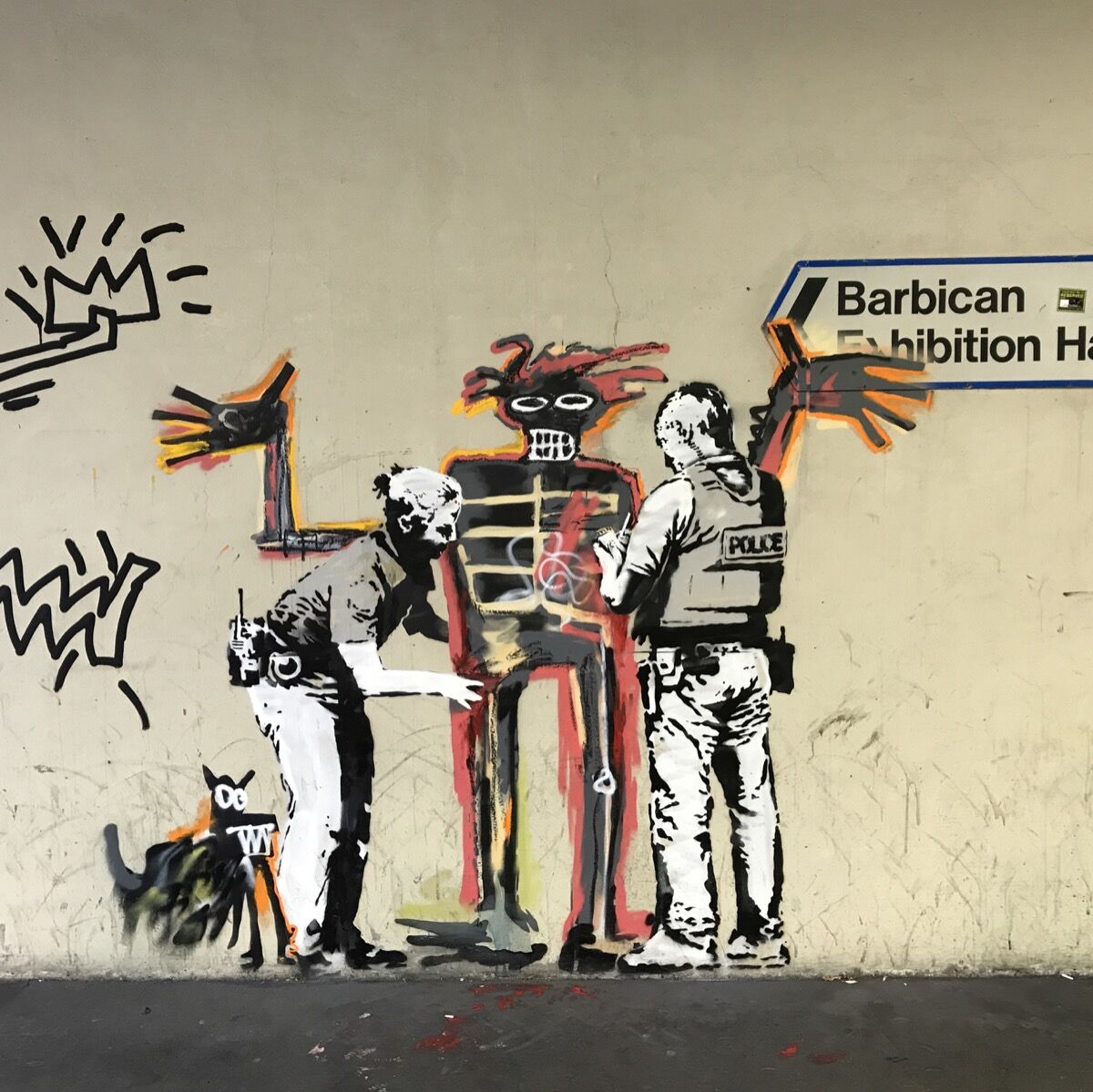
Banksy, Basquiat being “stopped-and-frisked” outside the Barbican Centre, 2017. Photo by Ungry Young Man, via Flickr.
Banksy’s samplings from the art-historical canon are rare, but astute. For a 2018 piece in Paris, for instance, he pilfered a motif from Jacques-Louis David’s painting Napoleon Crossing the Alps (1800–01). And at the Barbican Centre in 2017, he threw up this biting mural, showing a man and his dog, borrowed from Jean-Michel Basquiat’s 1982 work Boy and Dog in a Johnnypump. The figure, its arms in the air, is being dispassionately frisked by two cops wearing bulletproof vests. In the original painting, the figure’s posture reads as a sort of anguished shrug.

